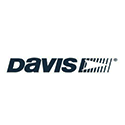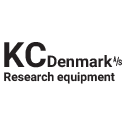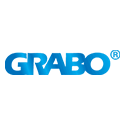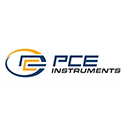-
 ×
×
Understanding Dissolved Oxygen Meters
Dissolved oxygen meters measure the concentration of oxygen dissolved in a liquid, providing vital data for assessing water quality and biological activity. Specifically, these are used to gauge the quality of water or the activity of organisms that live in aquatic environments. Clark-type electrochemical, luminescent optical or galvanic are the three major types of technology employed by most meters. One needs to understand these before choosing which one suits his or her situation because each has its own merits while also being limited at some point.
Types of Dissolved Oxygen Meters
1. Electrochemical (Clark-type) Meters
Electrochemical meters, also known as polarographic meters, are widely used due to their affordability and accuracy. They function by measuring the current produced by the reduction of oxygen at the cathode. Key features include:
Accuracy: High precision, suitable for laboratory and field use.
Maintenance: Requires regular calibration and membrane replacement.
Response Time: Generally quick, making them ideal for dynamic environments.
2. Optical (Luminescent) Meters
Optical meters use luminescence quenching to determine oxygen levels. A light-sensitive dye emits fluorescence when exposed to blue light, and the presence of oxygen quenches this fluorescence. Key features include:
Accuracy: High accuracy with minimal drift over time.
Maintenance: Low maintenance, no membrane replacement needed.
Response Time: Slightly slower than electrochemical meters but still efficient.
3. Galvanic Meters
Galvanic meters operate similarly to electrochemical meters but use a different type of electrochemical cell. They are self-polarizing and do not require an external power source. Key features include:
Accuracy: Comparable to electrochemical meters.
Maintenance: Requires less frequent calibration but still needs membrane replacement.
Response Time: Faster than optical meters, similar to electrochemical meters.
Factors to Consider When Buying a Dissolved Oxygen Meter
1. Application Environment
The environment in which you plan to use the meter significantly influences your choice. For instance:
Field Use: Portable meters with robust, waterproof designs are ideal.
Laboratory Use: Benchtop meters with high precision and multiple calibration options are preferred.
2. Measurement Range and Resolution
Different applications require varying levels of measurement sensitivity. Ensure the meter you choose has an appropriate measurement range and resolution for your specific needs.
Application | Suitable Meter Type | Measurement Range (mg/L) | Resolution (mg/L) |
| Environmental Monitoring | Portable Electrochemical | 0-20 | 0.01 |
| Aquaculture | Optical | 0-10 | 0.1 |
| Wastewater Treatment | Galvanic | 0-50 | 0.1 |
| Laboratory Research | Benchtop Electrochemical | 0-20 | 0.001 |

3. Calibration and Maintenance
Consider the ease of calibration and maintenance requirements. Optical meters generally require less maintenance than electrochemical or galvanic meters, which need regular membrane replacement and calibration.
4. Data Logging and Connectivity
For continuous monitoring and data analysis, meters with data logging capabilities and connectivity options (USB, Bluetooth, etc.) are advantageous.
Pros and Cons of Each Meter Type
Meter Type | Pros | Cons |
| Electrochemical | High accuracy, quick response time | Requires frequent calibration and maintenance |
| Optical | Low maintenance, minimal drift, high accuracy | Higher initial cost, slower response time |
| Galvanic | Self-polarizing, less frequent calibration | Membrane replacement, slower response than electrochemical |
Takeaway
- Electrochemical meters are perfect for applications requiring high precision in dynamic environments but they need frequent maintenance.
- Optical meters are best suited for fields that have minimal drifts because of the low maintenance and high accuracy they provide.
- Galvanic meters offer intermediate maintenance levels which lead to greater performance in down-country uses.
A comparison between these concerns gives a way for one to buy wisely a dissolved oxygen meter that will best meet his/her requirements without any problems.















.png)

